22 Best Apps To Learn Italian In 2023 (Thoroughly Tested)
 Written byGiulietta Giordano
Written byGiulietta Giordano- Read time30 mins
- Comments0
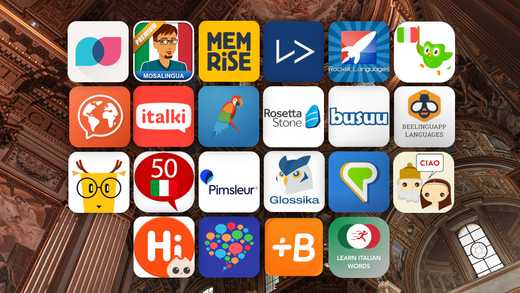
As an Italian learner, you’re lucky to have some great apps to learn Italian and help you on your journey towards fluency.
In addition to Italian online courses and other great Italian resources, there are some really engaging (and fun) web and mobile apps worth mentioning.
Each app is different and unique, with a different skill emphasis.
With this range of Italian apps vying for your attention, how can you make sure you choose the right one?
Today, I’ve narrowed down your options somewhat.
If you’re unsure which Italian language apps are most suitable, take a look at the list below.
Table Of Contents
DISCLAIMER: The comments below are personal opinions.
Best apps for learning Italian
Mondly

Mondly is modern and a real pioneer with augmented reality, virtual reality and chatbots to help people learn languages. This could be your platform if you enjoy playing around with different features or clicking around to discover more information. If you’ve enjoyed using Duolingo and Babbel in the past, Mondly could be your next bet, as it feels like a combination of these two with some extra visuals.
Platforms: Web, Android and iOS.
What’s good:
- Options to learn Italian with the support of languages other than English.
- You receive unique new lessons every day, rather than paying for content that’ll remain the same.
- One of my personal favorites was the ability to click any verb you see in context to open a small window with all conjugations of that verb (past, present and future), pronunciation included.
- Mondly actually creates daily lessons based on your previous learning, so some lessons will be adapted to you as an individual.
- The app has received great reviews for their chatbot and speech recognition features.
- Perfect if you like having the support of your native language to learn a new language.
- Wide range of topics covered for beginner courses, which is useful if you like learning vocabulary by category (travel, family, body parts, colors, etc).
What’s not good:
- You don’t get much for free - if you’re going to use Mondly, you’ll have to commit to a paid version.
- Sometimes the app can come across as a fancier version of Babbel or Duolingo, with similar translation exercises, match exercises (words-images or words-translation), which can get a little tiring.
- If you prefer a minimalist design or feel easily overwhelmed by platforms with a lot going on visually, you won’t like Mondly.
- You’ll have to pay more if you want access to more languages apart from Italian.
- The intermediate and advanced levels aren’t that challenging. In fact, they seem almost similar to the beginner level, except for the fact you get exercises instead of lessons.
- Not the best if you dislike relying on translation to learn a new language.
- Dialogues can feel stiff and artificial.
Cost:
If you like the app, you can buy a subscription. You’ll have more time for each lesson and you will get to choose when to call it a day and stop studying. There are your subscription options:
- One month: $9.99
- Annual (one language): $47.99
See our Mondly review.
Rocket Italian

Rocket Italian is arguably the best structured course online for Italian and both the web and mobile apps are equally comprehensive.
The platform offers comprehensive courses that help you learn all language skills (speaking, listening, reading and writing). The app focuses on teaching you practical phrases and dialogues instead of isolated words and heavy grammar.
Platforms: Web, Android and iOS.
What’s good:
- Content is varied between interactive audio lessons, language and culture lessons, writing lessons and survival kit lessons.
- Voice recognition tool (Rocket Record) that helps your pronunciation.
- Host of the course acts almost like a teacher, guiding you through dialogues and asking you to repeat certain phrases.
- Audio quality and dialogues are excellent, including expressions used in everyday life.
- The culture lessons are invaluable, giving you details about how people interact and what is expected of an Italian speaker in certain contexts.
- Includes a “My Vocab” tool in which you can search for specific phrases you’ve learned in the past and see them immediately in context with pronunciation.
- Clean, intuitive and user-friendly.
- If you purchase the Italian course and decide it’s not for you, you have 60 days to ask for your money back without questions.
What’s not good:
- Requires an immediate financial commitment and is quite pricey compared to other apps, but it’s for lifetime access rather than recurring.
- If you prefer immersion to constantly getting explanations and guidance in English, you’ll be better off with another option.
Cost:
- $99.95 for the first level (beginner to low intermediate).
- $249.90 for levels one and two together (beginner to intermediate/low advanced).
- $259.90 for all 3 levels.
Join The Guild by clicking here, select Italian and I’ll send you a unique offer for Rocket Italian exclusive to my readers only.
See this Rocket Italian review.
Babbel
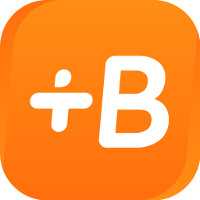
Babbel has completely taken over the language learning market with its attractive design, dialogue-based learning and bite-sized lessons (15 minutes) that you can easily complete every day.
The fact that you’re immediately exposed to dialogues is exciting and helps you understand how the language works from the get-go. There are also occasional grammar and cultural notes that glue it all together and plenty of interesting courses that act as a complement.
Platforms: Web, Android and iOS.
What’s good:
- Although Babbel offers different languages to learn, the content is unique for each language. That means you’ll find original content that relates to cultures of Italian-speaking countries and is actually relevant to the language at hand, rather than finding copy-pasted material.
- Babbel asks you plenty of questions as soon as you start your account, so they can curate content that speaks to your interests and level.
- Easy to study on-the-go.
- Quite affordable considering the quality of the product.
- Each lesson uses dialogues that put expressions and words in context (all with audio read by native speakers). The conversations don’t feel forced or robotic. You’re also invited to start completing the gaps in these dialogues as soon as you get started, which is a great way to start applying your knowledge immediately.
- Interface is clean, well-designed and user-friendly.
What’s not good:
- Some might claim Babbel is basically a glorified Duolingo or Rosetta Stone with stronger marketing, as its activities end up not being too diverse (flashcards, fill-in-the-blanks, multiple choice, listen and repeat).
- After completing a few levels, the lessons start getting a little repetitive and boring.
- There isn’t a trial period: you get to try only one lesson for free, which isn’t always the best way to figure out if an app works for you or not.
Cost:
- One Month: $12.95
- Three Months: $26.85
- Six Months: $44.70
- Twelve Months: $83.40
Babbel also offers a 20-day money-back guarantee. If you’re not satisfied with what Babbel has to offer you, you can contact their Customer Service within 20 days from the moment you start your subscription and get a full refund!
See our Babbel review.
Pimsleur

Pimsleur is based on an audio-based system which promises to eliminate noise and distractions to teach you Italian. Using the principle of anticipation, graduated interval recall, context and limited amounts of information at a time, Pimsleur teaches you Italian with the guidance of a tutor in English, so you’ll get something similar to a traditional classroom experience with native speakers to provide examples.
Platforms: Web, Android and iOS.
What’s good:
- Before starting your free test, you’re introduced to Dr. Pimleur’s principles of memory and language learning, which can help you create a habit and become more consistent. For example, you’re invited to complete only one audio lesson per day, not more, which sounds quite doable.
- Some new words are broken down into parts, so you can perfect your pronunciation syllable by syllable and sound natural from the beginning.
- If you enjoy the guidance and explanations in English from a teacher who can lead you little by little, you’ll enjoy Pimsleur’s courses. You’re taken step by step through a dialogue and asked to repeat expressions. Shortly after that, you’re unexpectedly asked to recall expressions, which is a smart strategy.
- Something I have personally enjoyed is that intonation is also taught. This is especially important in a language like Italian, in which asking most questions and making a statement differ in nothing except intonation.
- Vocabulary review options include reading, using flashcards, a quiz, a “Speak Easy” option (to practice rhythm, intonation and pronunciation) and my personal favorite: a speed round in which you match expressions as quickly as you can, forcing you to recall under pressure.
What’s not good:
- Pimsleur only allows you to test one free lesson, which is not enough, especially if you’re not an absolute beginner.
- If you’re bothered by the guidance or explanations of a teacher in English separating you from full immersion, this is not the product for you.
- Because the course requires speaking out loud and repeating words as you hear them, it is not the best option if you’re learning Italian in public places or during small breaks, like returning home from work.
- You’ll have to make quite the investment if you want to purchase the entire course (all levels) straight away.
- Recent reviews claim the app is not working well technically, with frequent crashes and difficulty downloading lessons.
Cost:
$575.00 for a full course (levels 1-5). You can also choose to purchase 30 lessons at a time (one level) for $150.00 each. If, instead, you prefer a subscription type of payment, this is also available. The Pimsleur Premium App subscription costs $19.99 a month.
See this Pimsleur review.
Memrise

Memrise helps you memorize expressions and words in Italian little by little using spaced repetition and short lessons. Its concept revolves around information recall and input that is just challenging enough to develop your Italian without getting overwhelming. Memrise uses video and audio clips from native speakers on the streets to introduce vocabulary, which I find quite charming and original!
Platforms: Web, iOS, Android.
What’s good:
- The app shows you real people from the streets using the expressions you’re learning. It’s quite an original, fun way to learn new words, as you actually associate them with a face!
- When reviewing vocabulary, there are multiple ways you can test yourself. If you’re willing to pay, you’ll get a healthy variety of activities to develop your Italian (grammar, pronunciation practice, listening comprehension, learning with the locals, and more).
- You can set daily reminders so you never forget to review your vocabulary.
- Great value for a free app - you still get a lot of content without having to purchase a paid plan.
- If you’re interested in learning other languages apart from Italian, Memrise allows you to study multiple at the same time for free.
- Fit if you’re just getting started and only want to have some awareness of how Italian works.
What’s not good:
- Some sets of flashcards are only available on the web version of the app, as they are created by other users. The fact that users can create their own courses also means quality will change drastically among them.
- You can get easily bored, as the method gets repetitive after a while. If you’d like a wider variety of activities, you’ll have to go with the paid version of the app.
- Sometimes it isn’t so useful to memorize words in isolation. Context can work better (for example, seeing those words in a dialogue or piece of news).
- If you’re an advanced Italian learner, you’ll probably be better off with other options.
Cost:
- One Month: $8.99
- One Year: $45.00
- Lifetime: $139.99
If you’re really keen on learning different languages, a lifetime subscription would be the best choice!
italki
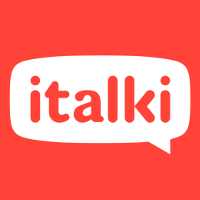
italki features an incredibly large pool of potential teachers, and Italian tutors on this platform usually charge less than tutors who work for competitors.
The italki app is easy to use, and it has both desktop and mobile versions.
Pros/cons:
In addition to offering tutoring services, italki also provides writing checking services that you can use to boost your Italian writing skills. One of the only drawbacks of this platform is its payment model. To pay tutors on italki, you first need to load funds into your italki account, which adds an annoying step to the process of connecting with your tutor.
Platforms: Web, Android and iOS.
Cost:
italki does not offer a subscription. Instead, you will pay for each lesson that you get. You can usually pay around $15.00 for one hour of lesson, but some teachers are willing to teach you for just $7.00/hour. On the other hand, if you want to learn something really specific, you will have to pay more — you can pay even $35.00 for just one hour of Business Italian!
See our italki review.
Glossika

Glossika revolves around the concept of spaced repetition, which has become practically a requirement in new language learning apps. The app customizes content to your level and uses audio-based lessons to create an immersive environment and help you speak Italian from the get-go. The platform also uses dictation, multiple choice and fill-in-the-gaps for you to practice.
Platforms: Web.
What’s good:
- Take a placement test to see where you should start.
- Set a daily goal for yourself, so you adjust your expectations and measure your progress.
- The course introduces only about 5 phrases per lesson, so you never get overwhelmed and focus on perfecting your skills little by little.
- You can skip sentences that are too easy for you (or that you already know).
- You can favorite certain phrases you predict you’ll be using often.
- You start learning useful phrases right from the start, even if they wouldn’t be traditionally taught in an Italian course right from the start. For instance, in your first lesson you might learn how to say “Today is Wednesday”.
- Subscription includes access to all language courses, not just Italian. This can be an advantage if you want to learn multiple languages.
- No grammar explanations, which is great if you prefer immersive courses.
What’s not good:
- If you prefer a more traditional way of learning Italian or are an absolute beginner, Glossika might overwhelm you. You start learning entire phrases right from the beginning, sometimes learning to say “It’s clean now” or “You’re lazy” before learning how to say “What’s your name?“.
- Some reviews claim the content can get a little boring after some time.
- Subscription includes more languages than just Italian, which might be a disadvantage if you aren’t interested in learning other languages.
- No grammar explanations, which can be a disadvantage if you prefer having some support in that area.
- Content is the same across different languages, which can be a turn-off.
Cost: 7-day free trial before you purchase the product. After that, you can pay $30 a month or $299.88 yearly for access to all languages offered by Glossika.
See this Glossika review.
Duolingo
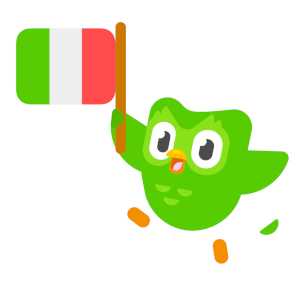
Duolingo is one of the most popular Italian apps on the market if you want to learn this language for free.
While Duolingo offers many of the same features as paid rivals like Busuu and Rosetta Stone, this app’s free version is almost as robust as its optional paid subscription.
Duolingo’s Italian course is relatively robust, but it isn’t as strong as this app’s European language courses.
Platforms: Web, Android and iOS.
Pros/cons: You can easily get by with the free version of Duolingo. If you want to get rid of ads and store your lessons offline, however, there is a paid version of the Duolingo app. Duolingo offers less Italian course material than some of its competitors.
Cost:
If you want to have unlimited Hearts and an ad-free experience, you can pay for a subscription. There are currently different options:
- One Month: $12.99
- Six Months: $47.99
- One Year: $79.99
Another perk of having a Duolingo Plus subscription is that you can download all the lessons and play them offline!
Lingodeer

Lingodeer is a grammar-based platform. From this list of apps for learning Italian, it might be the one that most closely resembles a traditional course, because it relies on grammar explanations alongside vocabulary study to help you understand the complexities of Italian from the get-go. Apart from that, Lingodeer offers some side tools to help you learn Italian, such as quizzes and tests, cultural stories and flashcards.
Platforms: Web, Android and iOS.
What’s good:
- Simple design, perfect if you like a clean platform that doesn’t feel visually crowded.
- Great option if you’re a grammar lover and enjoy understanding the structure of a language as you go, rather than just being exposed to the language.
- Lingodeer might be better for you if you’re an absolute beginner who likes having a structured, objective explanation of how things work before you dive in, pretty much like you would in a traditional school.
- Linear curriculum with suggested categories, which can be an advantage if you like having order and structure in your learning.
What’s not good:
- At least for beginner lessons, some vocabulary is introduced in isolation (not in the context of a dialogue or sentence).
- If you like learning through immersion and not having to deal with grammar explanations, Lingodeer is not for you. The very foundation of the app relies on the importance of grammar to understand a language.
- Might be a little too easy for intermediate and advanced learners.
Cost: $11.99 per month, $29.99 per quarter, $79.99 per year or $99.99 for lifetime access to Lingodeer.
See this Lingodeer review.
Learn Italian Words
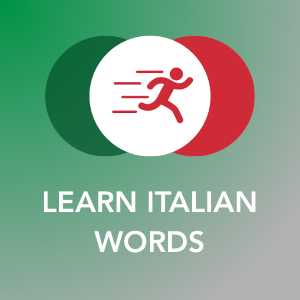
This app is built more like a collection of flashcards than a course. If English is your mother tongue, all the best! All the flashcards included have a translation in English so that you can always pinpoint what an expression in Italian truly means. If you’re worried about not learning all that much, worry no more! Learn Italian Words has 10,000 different flashcards, ranging from food-related expressions to common phrases.
The best part of it? It’s totally free! There are no subscriptions or premium accounts — you get everything. You can start your journey into Italian and reach a pretty high proficiency without spending a dime. On the other hand, it is not the best app to use if you want to learn grammar. Just like Memrise, Learn Italian Words is focused on speaking and learning fixed expressions.
Platforms: Android and iOS.
Cost: Free, with some in-app purchases.
Drops

Here’s another gamified learning experience. The colorful interface is sure to keep you glued to your smartphone while you learn all those useful expressions that’ll make you sound like the long-lost cousin of Francesco Totti. Each time a new word is introduced, the app will also show its translation in English and will even show a picture depicting the world! Crazy, right?
Platforms: Web, Android and iOS.
Cost:
You can learn without paying for a subscription, but you will be limited to just one lesson a day. If you get the premium, you will get a limitless ad-free experience. Drops currently offers three different kind of subscriptions:
- One Month: $9.99
- One Year: $69.99
- Lifetime: $159.99
If you get the one-year subscription, you will also get a 7-day free time period! Grazie!
See this review of Drops.
Fluenz

Do you miss going to classes? Then Fluenz is just for you! It simulates the environment of a real language learning class. You’ll feel like there’s an actual tutor teaching you all the secrets of the most beautiful language in the world.
Fluenz is best used as a preparation for an actual course. Maybe you’re fixed on going to university and get a Language Degree. The best thing you can do is prepare yourself with Fluenz — you can easily impress your tutors by showing off your skills!
Platforms: Web, Android and iOS.
Cost:
The Italian course on Fluenz is divided into 5 different levels. You can choose how many of them you want to attend! Right now, it’s possible to buy these different packages:
- Level 1: $187
- Level 2: $187
- Level 1+2: $258
- Level 1+2+3: $308
- Level 3+4+5: $320
- Level 1+2+3+4+5: $398
Read this Fluenz review.
Polygloss

Polygloss is a work in progress. And yet, it’s already one of the most interesting language learning apps out there (dare I say…more creative and innovative than other giants out there who claim to be “fun” and “engaging”?). Polygloss aims to help you improve your Italian production and fluency through games. The difference is that it pairs you up with other players from around the world who are interested in the same language. Using prompts, images and challenges about different topics, the app inspires you to start interacting immediately.
Platforms: Web and Android (iOS coming).
What’s good:
- It targets intermediate learners specifically.
- The app gives you prompts to talk about with your partner, rather than forcing you to speak without any starting point. This will certainly help reduce awkward silences.
- You get randomly matched with other players, which means you can hear a variety of accents and practice with different people. Nevertheless, if you loved practicing with a specific person, you can also add them as friends and play only with them.
- You can follow a tree of lessons so you won’t feel lost in your Italian learning journey.
- Bookmark useful expressions you believe you’ll want to use in the future.
What’s not good:
- Not the best option for absolute beginners.
Cost: Currently free with ads, but since the app is a work-in-progress, the model might change.
Tandem

Tandem is a tutoring platform that pairs you with a native Italian speaker who is an ideal match for your language-learning goals.
Since it’s similar to a social media service, Tandem is also useful if you want to make personal connections with Italian speakers.
Pros/cons: Even the free version of Tandem has a lot to offer, and this platform is very active, so it’s easy to find language partners. Tandem also includes a lot of features aside from tutoring, however, which you might not find to be particularly useful.
Platforms: Android and iOS.
Cost:
Even though the free version of Tandem is good enough, you can pay a subscription to remove all the ads, search for members in a specific place and even search for users near you! The available subscriptions are:
- One Month: $6.99
- Three Months: $11.99
- One Year: $34.99
See this Tandem review.
Learn Italian — 50 Languages

This app is completely free and can also be used offline. If you’re low on cash — but you still want to learn — Learn Italian — 50 languages is your best pick. When you start a course, you can also pick your native language so that everything that’s thrown at you will also be translated into your language of choice. Pretty neat!
Learn Italian — 50 languages offer 100 easy lessons that’ll teach you all the fundamentals of Italian up to the A2 level, but if you want to attain a deeper knowledge of Italian you’re out of luck, sadly.
Platforms: Android and iOS.
Busuu

Busuu’s strong focus on speaking is its main feature. Not only does it teach you the language through real-life dialogues, but it also lets you practice your speaking skills! In fact, thanks to their speech recognition tool, you can try speaking Italian and see if you’ve nailed down that accent.
On Busuu you can also choose a specific topic. Say that you just want to learn Italian for when you’ll travel there — you can choose to study a specific course tailored for it! Of course, if you want to really learn the language, the free version of Busuu will not be enough. Grammar lessons are locked behind a subscription. Busuu offers two different kinds of subscriptions — premium and premium plus. They are quite similar in price, but the Premium Plus subscription allows you to get official certificates and personalize your study plan.
Platforms: Web, Android and iOS.
Pros/cons: The Italian courses that Busuu offers are well-structured and easy to follow. While this app isn’t incredibly rigorous, it uses contemporary teaching tools to provide you with a detailed grasp of the Italian language. The free version of Busuu, however, is relatively limited in its scope.
Cost:
- One Month: Premium $9.99, Premium Plus $13.99
- Three months: Premium $24.99, Premium Plus $28.98
- Six Months: Premium $34.93, Premium Plus $39.96
See our Busuu review.
MosaLingua
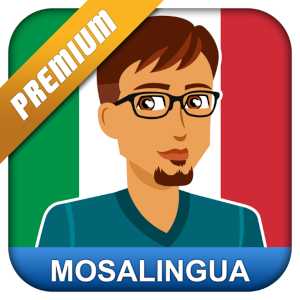
Here’s another app that focuses on flashcards. The strong point of Mosalingua is its use of native speakers — each flashcard comes with an audio recording of what is written on it, recorded by an Italian native speaker! On the other hand, Mosalingua doesn’t teach you grammar rules, so if you want to have an in-depth knowledge of Italian, you should pair it with other courses.
Platforms: Android and iOS.
Cost:
You can either get a monthly subscription or an annual one:
- One Month: $8.99
- One Year: $53.99
HelloTalk

This one is probably the most known language exchange app.
Just like Tandem and italki, you will get paired with native speakers of the language you want to learn. Even though it might sound quite similar to Tandem, there are some features that are unique to HelloTalk. You can correct your partner and receive corrections in real-time. You can even video call your partner.
The free version might be enough for you. If you want to pay the subscription fee, you will get better translations for all your messages, so that even if you don’t know how to say a thing in the language you’re learning, you can still communicate with your partner! You’ll also have the chance to add more than 2 languages to your profile if you practice more than 2 languages at a time.
Platforms: Web, Android and iOS.
Cost:
These are the packages that are currently offered by HelloTalk:
- One Month: $6.99
- One Year: $39.99
- Lifetime: $89.99
ItaliAmo

This is an app developed by the Italian government together with IED, the European Design Institute of Rome. It is a free app aimed at teaching the basics of Italian. The course is divided into 10 short lessons that’ll teach you all there is to know about Italian cities and their own culture. Thanks to ItaliAmo you will learn both the language and what makes Italy one of the most interesting countries in the world.
It’s a great app to start your learning Italian, but if you already have a basic knowledge of the language you can ignore this app.
Platforms: Android and iOS.
Lingvist

Lingvist is a flashcard app founded by Mait Müntel in 2013. The app is organized by courses, or flashcard decks, to help you learn Italian by growing your vocabulary. A main course on Lingvist includes the 4,000-5,000 most frequent words in your target language, with the possibility of adding extra vocabulary for particular goals (business, travel, a holiday in Spain, object pronouns, etc). The design of the app is simple and pleasant on the eye, which is always a plus in a market that praises overcrowded apps.
Platforms: Web, Android and iOS.
What’s good:
- There’s a placement test at the beginning, so all materials adapt to your needs.
- The app determines your level based on how many words you’d be able to understand in any given text. For instance, after taking the placement test, the app might tell you you’d understand about 33% of any given text in Italian. The goal? 100%, of course! This is exciting because it gives you a much clearer, specific reference. It’s much easier to decide you’re ready to face real-world Italian after knowing you can understand about 80% of a text than if somebody tells you you’re a “B2 level”.
- Lingvist provides decks with different themes (love, environment, food, body parts…) so you can get a wide range of vocabulary and decide what topics mean the most to you.
- You can create your own decks.
- The app teaches you vocabulary in context, rather than teaching you words in isolation.
- The cards and decks are highly-customizable. You don’t have to stick to what the app suggests.
What’s not good:
- If you tend to be bored by flashcards, this app is definitely not for you. Its entire concept is based on learning flashcards organized by decks (courses).
Pricing
- One-week free trial (no credit card or payment method required).
- 15.99EUR monthly, 199.99EUR once (lifetime subscription), 79.99EUR yearly.
LingQ

LingQ is one of the most popular platforms for Italian learners who love reading and building up vocabulary as they discover it in context. It is basically a library of content from all over the web which helps you learn new words through exposure to texts in Italian. You get to interact with the text and mark the words you don’t know, so you can build your own flashcards and study the vocabulary later.
Platforms: Web, Android and iOS.
What’s good:
- LingQ is all about learning in context and leaving grammar as an afterthought, which speaks to many language learners who love learning through entertainment.
- Ability to import your own content and automatically turn it into an interactive lesson, just like the ones already available on the app.
- Includes content from other popular entertainment and news platforms, such as Netflix, Medium, YouTube, Quora and more.
- Option to learn more than 19 different languages, if you’re interested in other languages apart from Italian.
- Dictation exercises to help you improve your listening skills.
- Browse library by level and topic.
What’s not good:
- Content library feels a little unorganized.*
- It can take a little while to be able to use the platform with all of its features comfortably, as there’s a lot to learn.
- The flashcard load can become quite overwhelming after a certain point, as words keep accumulating.
- Premium options can feel quite costly compared to similar apps.
Cost: Premium option costs 12.99EUR per month, 71.94EUR every 6 months, 107.88EUR yearly or 191.76EUR every 24 months. Premium Plus gives you access to all Premium features and extra points for live tutoring, writing corrections and premium lessons at 39.99EUR per month, 233.94EUR every 6 months, 419.88EUR yearly and 815.76EUR every 24 months.
Speechling

Speechling has to be one of my favorite language learning tools to date. It’s 100% focused on pronunciation and its free-of-cost version already offers great value, but the unlimited version includes serious benefits, too! You can get one-on-one coaching with a native speaker, keep an audio journal of your practice and switch between languages as you wish.
Platforms: Web, Android and iOS.
What’s good:
- Side-by-side comparisons of your voice and a native speaker’s voice (you can even choose if the speaker is male or female!).
- Follow the suggested curriculum or learn random phrases according to what you believe is more useful.
- Feedback from your assigned coach (native speaker) within 24 hours. From experience, the feedback is usually pretty detailed and specific!
- Use the toolbox for dictation exercises, flashcard study, listening practice and other features.
- Learn full phrases rather than isolated words.
- The app features an audio journal that saves your recordings and keeps track of your progress.
- You can switch between languages anytime, which is great if Italian is only one of your target languages!
What’s not good:
- Up to 35 coaching sessions per month for free version. If you’d like unlimited recordings, you must pay the Unlimited version.
Cost: Plans from $19.99 per month.
Choosing the best mobile and web apps for learning Italian
Determining the best app to learn Italian really depends on your goals and learning style.
If you just want to learn enough Italian to order a coffee, then a basic vocabulary guide might be all you need.
If you plan on immersing yourself in Italian culture, however, you’ll need to select apps for Italian that fully prepare you for speaking, reading, and writing the language on a daily basis.
To get started, I suggest that you pick a free app that provides a basic overview of the Italian language.
From there, you can consider investing in a full paid Italian course that’ll help you develop a firm grasp of Italian.
There’s no single app that’ll make you a Italian expert overnight, but each of the apps I’ve shared in this guide can bring you closer to your goal of learning Italian.
Ciao!
Used an app for learning Italian that I didn’t mention?
Share it below in the comment section.
 Grab the link to this article
Grab the link to this article